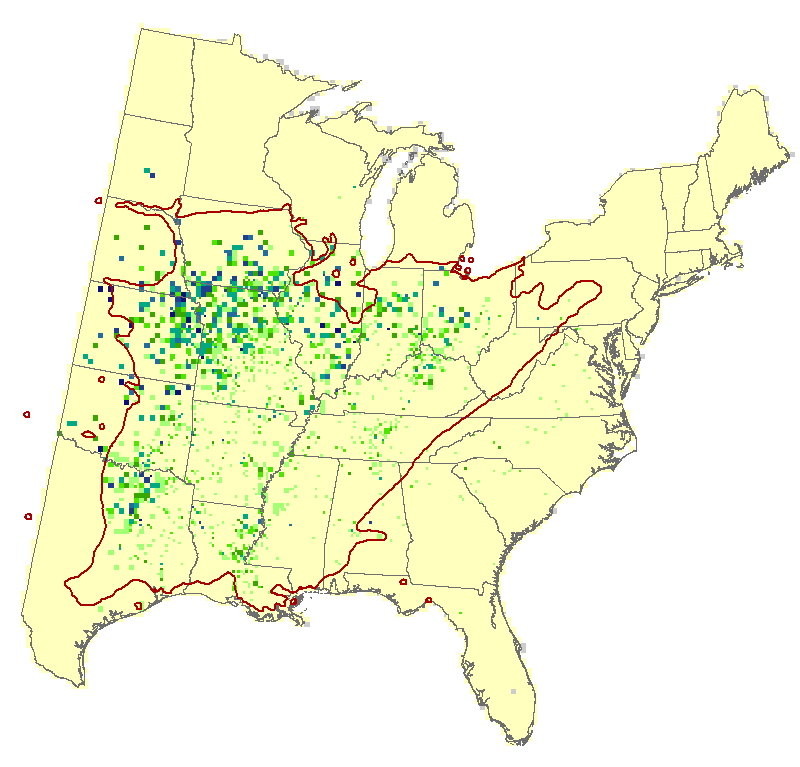honeylocust (Gleditsia triacanthos)
Model Reliability: Low
| GCM SCENARIO | % Area Occ | Ave IV | Sum IV | Future/Current IV |
|---|---|---|---|---|
| Actual | 5.3 | 7.7 | 11921 | N/A |
| RFimp | 7.1 | 3.5 | 7270 | 0.61 |
| CCSM45 | 12.6 | 2.8 | 10508 | 1.45 |
| CCSM85 | 20.4 | 2.9 | 17207 | 2.37 |
| GFDL45 | 19.3 | 3.1 | 17597 | 2.42 |
| GFDL85 | 27.2 | 3.1 | 24744 | 3.4 |
| HAD45 | 22.6 | 2.9 | 19181 | 2.64 |
| HAD85 | 30.9 | 2.8 | 25183 | 3.46 |
| GCM45 | 25 | 2.1 | 15765 | 2.17 |
| GCM85 | 33.8 | 2.3 | 22383 | 3.08 |
Regional Summary Tree Tables
Summaries for tree species are available for a variety of geographies, in both PDF and Excel format. These summaries are based on Version 4 of the Climate Change Tree Atlas
Interpretation Guide
Honeylocust is narrowly distributed (8.0% of area), but has a fairly high IV in certain desparate locations across the western half of the eastern US. Its low reliable model suggests a slight expansion of suitable habitat to the northwest (though still classed as 'No change'). SHIFT limits the natural migration into those areas, however. With its high capacity to adapt to climate change, yields an overall capability of good. It is also classed as a good species for infilling if desired.
Family: Caesalpiniaceae/Leguminosae
Guild: opportunistic, dispersal limited (large-seeded)
Functional Lifeform: large deciduous tree
| 5.5 | 1.91 |
| -0.54 |  |
MODFACs
What traits will impact honeylocust's ability to adapt to climate change, and in what way?:
Primary Positive Traits
Primary Negative Traits
Shade tolerance



